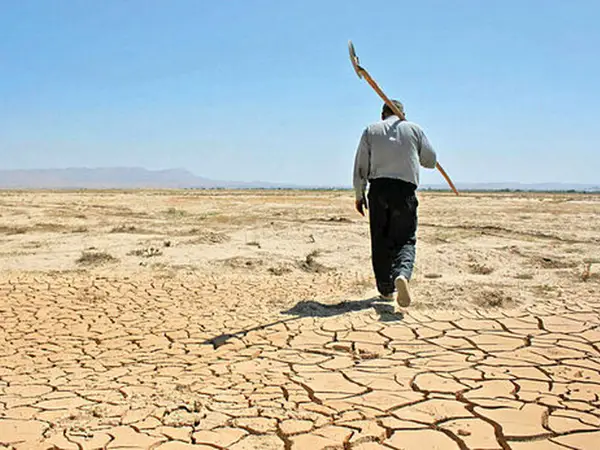Human-induced climate change including war and urbanization has played a major role in exacerbating a three-year drought in Iran, Iraq, and Syria.
Citing the findings of scientists from Iran, the UK, the US, and the Netherlands, World Weather Attribution reported that the drought spanning 36 months from July 2020 to June 2023, was “the second worst in the observed record.”
According to the report, the drought which affected large parts of Iran and the whole Euphrates and Tigris basin, the two rivers crossing Iraq and Syria, would have been less severe if the world had been 1.2°C cooler.
The consequences of the drought in the region were made even more severe as a result of sociopolitical conflicts, most notably the Ukraine war which heavily influenced food and energy prices, the report added.
The findings of the study maintained that “war and post-war transition, rapid urbanization in the face of limited technical capacity, and regional instability” compounded the negative outcomes of the drought in the region, leading to a humanitarian crisis.
The three-year drought in Iran, Iraq, and Syria was ruinous as the majority of the people in these countries depend on “rain-fed agriculture” to sustain their livelihood, said the report.
World Weather Attribution also warned that under the present climatic situation, it is to be expected that such severe droughts will recur “at least every decade.”
“After quite good rains in 2020 and good harvests, three years of very low rainfalls followed with very high temperatures led to a drought with very severe impacts on agricultural access to potable water,” France24 quoted Friederike Otto, affiliated with Imperial College London, as saying with regard to the three-year drought.
Meanwhile, Mohammad Rahimi, professor of “desert greening” at the University of Semnan, Iran, emphasized the importance of better resource management given increasing temperatures in the region.
“We anticipate that we will have more evaporation and transpiration from the plants so I am not so optimistic for the future,” Rahimi stipulated.
The Iranian regime’s mismanagement of the country’s environment, especially water resources, have garnered harsh criticism from scientists and activists over recent years.
Three months ago, Iranians held a demonstration in the northwestern city of Tabriz to protest mismanagement that has led to the disappearance of Lake Urmia.
In July last year, a rally was held for the same reason and the regime’s security forces arrested several activists.
Located between the provinces of East Azarbaijan and West Azarbaijan in northwestern Iran, Lake Urmia (Orumiyeh) was the largest lake in the Middle East and the sixth-largest saltwater lake on Earth with an original surface area of 5,200 square kilometers in the 1970s, or 2,000 square miles. It had shrunk to 700 sq km by 2013. The lake began shrinking in the 1980s due to water mismanagement and climate change.
Farhikhtegan newspaper reported last year that a quarter of Iran’s farmers have lost their jobs in the past seven years mostly due to lack of water.
Droughts and shortage of water have also lead to soil erosion, desertification, and dust storms in Iran.
Iran’s health ministry revealed in July that approximately half of Iran’s population is currently facing hazardous dust storms, posing serious risks to people’s health.
However, Mohammad-Mehdi Hosseini Hamedani, the Supreme Leader’s representative in the city of Karaj, attributed the low precipitation in Iran to a lack of hijab observance, after many women took off their veils following months of protests.






















